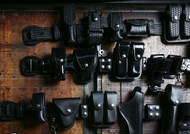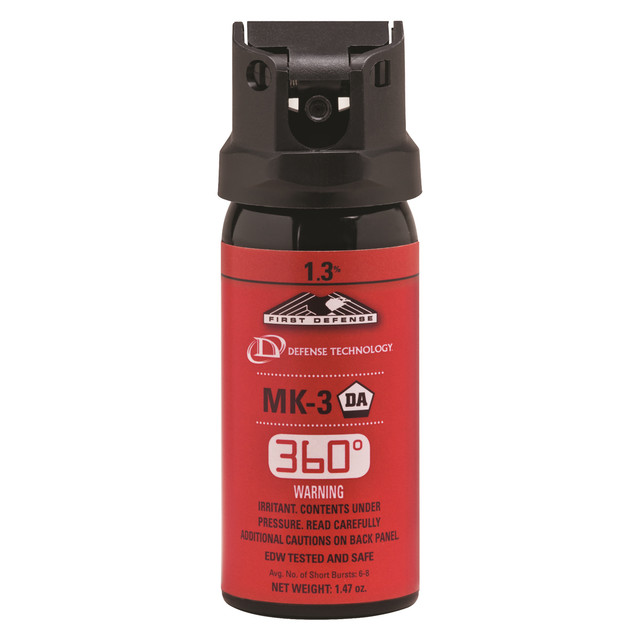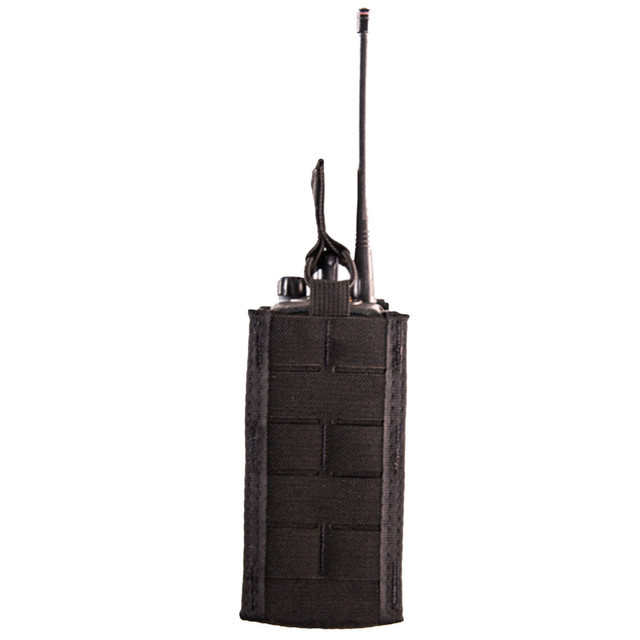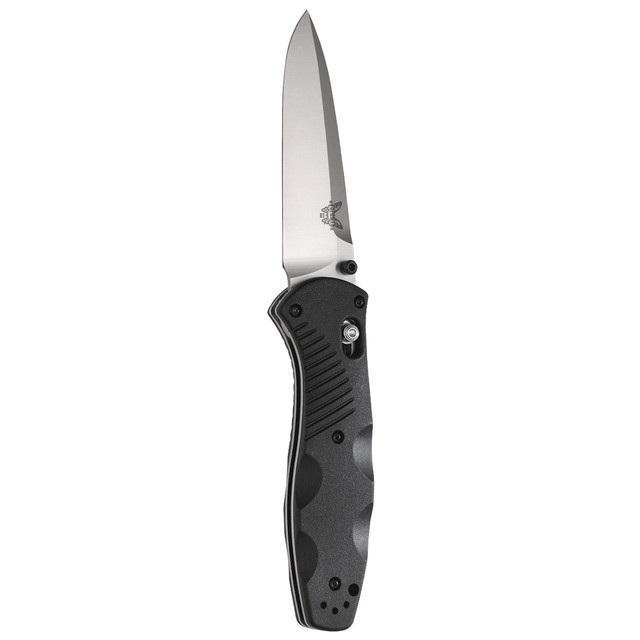How to Assemble the Best Police Duty Belt Setup for You (Plus 6 Tips for Comfortable Wearing)
Oct 12th 2023
Law enforcement officers carry everything they need on their duty belt, making this piece of equipment arguably the most important part of a police officer’s uniform. While many police academies and departments instruct new officers on how to set up their belts and what to put on them, many LEO’s create a unique setup that works best for ease-of-access and wearing comfort.
Organizing your police duty belt takes time and practice, often changing as new equipment or tools become available to you. Duty belt adjustments may include everything from the tightness and placement of the belt itself to rearranging the entire layout of the tools on your belt. However you choose to wear your belt, understanding what police gear you can carry on a duty belt and the options you have for setting it up influence your experience.
Considerations Before Purchasing Duty Belt Gear
When it comes to the law enforcement gear you carry and how, your department may have specific requirements on what you have and how you wear it.
Make sure that before you purchase new equipment or build out your duty belt, you take the time to check in with your agency for any specific requirements.
Pro-Tip: As a protective measure to ensure that police gear makes it only to qualified hands, Curtis Blue Line enacts a restriction on particular products that keeps them exclusive to law enforcement professionals. You may be required to provide proof of your employment before we ship your order.
Choosing the Right Duty Belt and Accessories
Even experienced police officers often wonder how they can improve their duty belts to make it easier to access and more comfortable to wear. Duty belts can come in various materials, and police gear manufacturers know that customization improves the belt’s utility. Law enforcement officers have many considerations to go over when choosing a new police duty belt, including:
Duty Belt Material
Duty belts typically come in leather or nylon. While leather belts may seem more traditional and can provide a sturdier build, nylon belts offer a host of benefits ranging from lighter weight to better comfort due to easier adjustability.
Holsters, Pouches, and Other Holders
From gun holsters to cuff pouches, police officers often need multiple types of holders to wear so they can cart around the many necessary tools for day-to-day activities. Knowing what types of holders you prefer helps you create the ideal police duty belt setup.
Other Wearable Uniform Accessories
Duty belts are only one part of a police officer’s uniform, so LEOs should also consider the rest of their uniform when setting up their duty belt. Some officers use suspenders to help redistribute the weight of their duty belt, while others have to consider how their belt will fit in with other parts of their police uniform.
Police Duty Belt Equipment Placement
Now that you have a belt and its accessories ready to go, you may wonder, what should be on a police duty belt? Many police departments have a list of items that all officers must carry, and in some cases issue specific holsters, pouches, or other equipment to make it easier for LEOs to build their police duty belt.
However, over the course of their career, many officers find that they need to replace particular pieces themselves, or decide to create duty belts for certain circumstances.
For instance, you might have a duty belt that you only use in the office, with a second one equipped for patrolling or handling high-risk situations. Having multiple duty belts allows for an easy exchange between them should you need to quickly switch them out.
Besides understanding what you need to carry, proper police duty belt gear placement ensures that you can quickly and easily reach your intended piece of equipment. Learn more about the most common pieces of police gear you’ll need on your duty belt and the typical location of each piece of equipment on a duty belt:
Firearm and Gun Holster
Police officers usually carry at least one firearm, and many LEOs opt for carrying a back-up as well. Law enforcement agencies usually supply an officer’s first duty weapon with a holster, and may provide a guideline for what their department’s police officers can choose to use as a second firearm. Some secondary holsters, such as the High Speed Gear Sure-Grip IWB Holster, also allow you to choose a right or left-handed option.
Firearm holsters can come in different colors and materials, such as nylon and leather, while others come in synthetic materials. Patterns like basket weave are common, as are shiny patent coatings. With all materials, gun holster manufacturers aim to create a sturdy piece of equipment that can withstand high or low temperatures and repel liquid to keep the guns in the holsters safe.
Where to Place Your Gun on a Police Duty Belt
Law enforcement agencies place handguns on the side of your duty belt closest to your dominant hand. The idea is that you should quickly and easily be able to locate and draw your firearm, eventually turning into a second-nature sort of action. Many law enforcement officers will use belt keepers on either side of their firearm’s holster to minimize movement and ensure that their firearm stays in place at all times.
Extra Magazines
Law enforcement officers must carry extra magazines in case they find themselves in a shootout situation. Make sure you carry loaded magazines so you can grab them quickly should you find yourself in dangerous circumstances.
Many police officer equipment manufacturers provide open and close-topped magazine pouches so officers can choose their preference. For instance, Safariland offers open top magazine pouches alongside pouches with button clasps.
Where to Place Extra Magazines on a Police Duty Belt
Easy reloading is key with extra magazines, so many officers place these on the front side of their duty belt opposite of their gun. Therfore, a right-handed officer will have their gun on the right side of their belt and extra magazines on their front left, while a left-handed police officer will have the opposite setup.
Police Baton
Whether used for self defense or as a method of crowd control, a collapsible baton provides quick and simple access to a non-lethal weapon that nevertheless can calm a rowdy group. Collapsible batons like the ASP Talon Infinity Baton work well for covert carrying, while other officers may prefer a fixed-length baton like the Monadnock PR-24 Rigid Side-Handle Baton.
Where to Place a Baton on a Police Duty Belt
Many police officers are advised to not place certain types of equipment behind their firearm, but a police baton can be stored in a baton case carried right behind a LEO’s gun. A belt keeper between the firearm’s holster and the baton case keeps the two weapons separated enough that an officer can quickly reach for one or the other and easily draw their sought-after weapon. This method also works well for fixed batons.
Taser
Tasers are important pieces of law enforcement equipment that can help subdue unruly offenders and help you regain control of a situation.
Where to Place a Taser on a Police Duty Belt
Officers don’t want to confuse their Taser with their sidearm, and the easiest way to avoid this is to place the Taser on the other side of your belt. Many LEOs place their Taser somewhere on their belt that's easy to reachwithout accidentally grabbing the wrong gear.
OC Spray
Whether you need to subdue an attacker, practice crowd control, or use it for personal defense, OC spray, or pepper spray, has its place on every law enforcement officer’s duty belt. OC spray comes in a stream that can be aimed directly at a perpetrator’s eyes or in vapor form for wider spray patterns.
Where to Place Pepper Spray on a Police Duty Belt
As with tasers, placing OC spray well away from your firearm ensures that you don’t accidentally fire a round instead of incapacitating an offender. Pepper spray holders like the Bianchi 7907 Accumold Elite OC/Mace Spray Holder often end up right in front of extra magazines on a duty belt, making the deterrent easy to reach and use.
Handcuffs
Every law enforcement officer needs reliable handcuffs to restrain a suspect, whether as a temporary measure during questioning or during arrest procedures. Cuffs vary depending on your preferences, though some officers elect to carry one set of hinged cuffs and one set of chain link.
Where to Place Handcuffs on a Police Duty Belt
While it’s important to easily access your weapons and self defense mechanisms, it’s equally essential that you can grab your handcuffs while apprehending a subject. You can use a handcuff case or pouch, secured on either side by belt keepers to keep your cuffs right where you need them. Many police duty belts end up with cuff pouches placed in front of the officer’s firearm.
Radio
Among the many essential parts of police work, consistent and easy communication maintains a spot near the top of the list. Your police radio connects you to other officers and your station, ensuring that you have an instant way to get in touch for information or the need for backup. Portable police radios often have a pouch of their own as well, usually with an enclosure that keeps the radio from falling out of the pouch.
Where to Place a Radio on a Police Duty Belt
Portable radios work best on the side of your belt opposite your firearm. If you have to hold your gun up while trying to communicate, you want to reach for the radio with your non-occupied hand, reducing the possibility of losing focus during an emergency situation.
Flashlight
Officers use their patrol duty flashlights for everything from lighting up nighttime crime scenes to investigating dark corners in vehicles, buildings, or other areas. Most patrol flashlights have multiple settings, allowing you to use a high or low intensity beam and utilize a strobe light if necessary.
Where to Place a Flashlight on a Police Duty Belt
Many LEOs place their flashlight on the side on which their radio lies, settling the tool behind their communications gear. Use a pouch to hold your flashlight secure while providing a barrier between the flashlight and other equipment on your belt.
Keys
You’ll carry a handful of keys with you at all times as a law enforcement officer, including everything from keys to police vehicles to handcuff keys. Some officers attach their keys directly to their duty belt while others utilize a key holder like the Bianchi Silent Key Holder, which is designed to silence the sound of jangling keys.
Where to Place Keys on a Police Duty Belt
Police officers often place their keys on the front of their ominant side, making them easy to grab as needed. Other officers place their keys behind the many other items opposite their firearm. Placement truly depends on the officer’s preference.
Other Police Duty Belt Equipment
Many law enforcement agencies outline what officers can and can’t have on their duty belts, while others allow officers to purchase their own equipment should they wish to. If your department allows you to add other police gear to your belt, it’s likely that you’ll find plenty of interesting and useful equipment to include.
Popular additional police duty belt gear includes:
- Back-up firearms
- Disposable gloves
- Additional flashlights
- Folding knives
- Multi-tools
- Additional handcuff keys
However you choose to outfit your police duty belt, the most important aspects are that your department approves of your additions to your police uniform and that you place extra items in reasonable places on your belt.
How to Wear Your Police Duty Belt: 6 Tips
After setting up your police duty belt, your next step is to ensure that you feel comfortable while wearing it and can easily and quickly access each piece of your gear.
Many LEOs make adjustments to the positioning of their equipment, often purchasing extra pouches or belt keepers to help them maximize the utility and comfort of their belts. It’s not unusual for police officers to search for answers to questions like, “Why does my police duty belt hurt my hips?” or “Where should your duty belt sit on your body?”
To answer those questions and more, we’ve gathered tips for law enforcement officers wanting to improve the experience of wearing their police duty belts.
Tip 1: Know How to Wear Your Belt
Your duty belt should sit in the standard area of any belt you wear. While some officers take the time to neatly thread their regular police uniform belt through the loops of their equipment holsters and holders, the easiest and fastest way to wear a duty belt is with belt keepers.
Instead of using your duty belt as a regular belt, you’ll attach your duty belt over a normal one. Belt keepers loop around both belts, keeping your duty belt from sliding down your legs or rotating while you wear it.
Many officers use additional duty belts to act as spacers between the pouches and holders for certain pieces of equipment, making it easy for them to tell what’s where just by touch and memory alone.
Tip 2: Follow Standard Positioning Procedures
While it can be tempting to mix up the placement of every item on your belt, some standard gear positioning should remain standard. These include:
- Main firearm on the dominant side
- Taser on the opposite side of the firearm
- Cuffs in a place easily reached by either hand
You should also follow any standard positioning procedures practiced by your department, as many law enforcement agencies prefer their officers to carry some or all of their equipment in a particular order.
Tip 3: Don’t Place Equipment on the Back of the Belt
As your gear and equipment take up space on either side and on the front of your duty belt, you may feel tempted to place lesser used items on the back of your belt. However, rear placement makes it difficult to grab an item quickly, and also puts those items at risk of being removed without your knowledge.
In addition, if you ever fall on your back, any equipment on the back of your belt will cause considerable pain. It’s best to leave the back of your belt alone and try to keep everything center or side loaded, with one exception: disposable gloves.
Carriers and pouches for disposable gloves like the High Speed Gear Duty Glove Pouch are typically created with a flat design, making them unlikely to cause daily discomfort or injuries after a fall. Add in a couple of belt keepers, and you can safely carry this equipment on the back of your belt.
Tip 4: Carry Additional Equipment to the Rear of Your Basic Gear
Many law enforcement officers carry other items with them, such as pens, notebooks, extra keys, and pocket knives. If you can’t fit these items safely and comfortably in pockets elsewhere in your police uniform, you can purchase additional pouches and belt keepers so you can add them to your duty belt.
Make sure that you position these items away from your more important gear. Placing them behind essential items still allows you the ease of grabbing them when needed, but keeps them out of the way during the heat of the moment.
Tip 5: Consider the Weight of Your Duty Belt
Police duty belts can quickly grow too heavy for comfortable wearing, making it difficult to move correctly and carry out the necessary functions of law enforcement work.
Excess weight can also cause back, hip, leg, and knee problems, all of which make you slower and contribute to a painful work day. When purchasing new equipment to place on your belt, consider how much extra weight you can carry without hindering your activities.
You should also consider how to distribute that weight. A police belt that’s too heavy on one side can cause you considerable pain and irritation, making it more difficult to complete daily tasks. Try to spread gear out enough that you have weight distributed as equally as possible all the way around your belt.
Tip 6: Test Out Regular Wear of Your Police Duty Belt
The most surefire way of ensuring that you have a comfortable and easy-to-use police duty belt is to test it out. Memorize where all of your equipment is and see how quickly and easily you can withdraw your gear from it.
If you have a hard time opening a pouch or never seem to reach it when you need it quickly enough, you can adjust your duty belt to make up for these problems.
You should also do a test of how your duty belt affects necessary actions like walking, running, and crouching. Take your time with these tests and really push yourself to the limit. Does your belt jostle around too much, make a lot of noise, or ride up or down? All of these problems could cause dangerous interference during a life-or-death situation, so rearrange your duty belt and test it again.
Once you have ease and comfort in wearing and using your police duty belt, you can trust it out on the field.
Outfit Your Police Duty Belt With Quality Gear from Curtis Blue Line
Whether you’re a law enforcement agency wishing to ensure your team has the best police uniforms and duty belts available or you’re a police officer filling out your first duty belt, Curtis Blue Line is here to help.
With police equipment from trusted brands like Safariland, Boston Leather, High Speed Gear, and Peerless, you can find everything your department needs on Curtis Blue Line.
We also carry police and law enforcement uniforms from well-known brands including First Tactical, Danner, and Vertx.
Shop online today or contact our product specialists to learn more about partnering with Curtis Blue Line.
The information contained in this article is intended for
general information purposes only and is based on information available as of
the initial date of publication. No representation is made that the information
or references are complete or remain current. This article is not a substitute
for review of current applicable government regulations, industry standards, or
other standards specific to your business, department, agency and/or activities
and should not be construed as legal advice or opinion. Readers with specific
questions should refer to the applicable standards or consult with an attorney.




